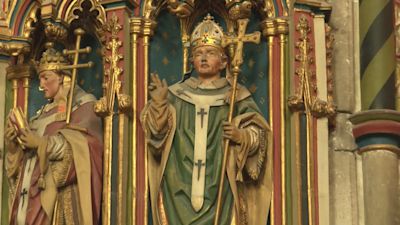Murder of St Thomas Becket a 'John F Kennedy moment' say's Archbishop of Canterbury

The murder of St Thomas Becket 850 years ago was a "John F Kennedy moment" that remains relevant in an age of Brexit, the Archbishop of Canterbury will say today (5/5).
Becket was cut down by knights loyal to King Henry II on December 29 1170, in an assassination that shook medieval England. But despite the passing of the centuries, his killing inside Canterbury Cathedral remains a shocking event.
Speaking later on Wednesday at an online preview of the British Museum's new exhibition on Becket's life, death and legacy, current Archbishop of Canterbury Justin Welby is to describe the saint as "fascinating, admirable, inspiring but also, entirely human".
In a pre-recorded speech, Mr Welby will argue that his predecessor is "in many ways a relevant character for today" despite his death 850 years ago. Parts of the archbishop's address were shared exclusively with the PA news agency ahead of the event.
He adds: "He's relevant because he speaks into a world which is struggling to cope with issues of the power of faith, the power of politics, and the power of faith and politics intermixed."
Mr Welby will speak at the virtual evening launch of the Thomas Becket: Murder And The Making Of A Saint exhibition for British Museum supporters on Wednesday evening.
The exhibition, which opens to the public on May 20, tells the story of Becket's life through more than 100 objects, including a complete stained-glass window on loan from Canterbury Cathedral.
The window was made shortly after the saint's death to depict his miracles, including a story of Becket curing leprosy. During preparations for the exhibition, experts discovered that the stained-glass pieces had been assembled in the wrong order for hundreds of years.
Mr Welby will also speak about Becket's enduring relevance when it comes to discussions of authority and identity in Europe. He adds: "Becket therefore stood for something."
Thomas Becket: Murder And The Making Of A Saint runs from May 20 to August 22 2021 in the Joseph Hotung Great Court Gallery at the British Museum.